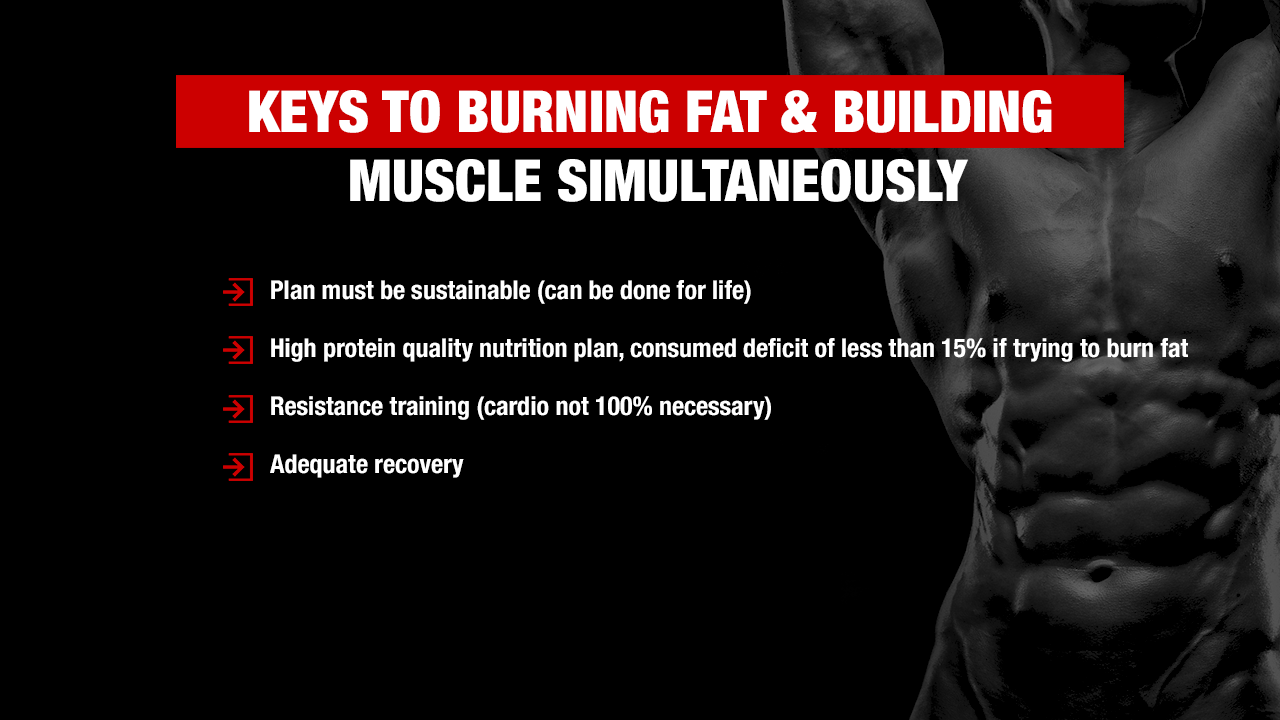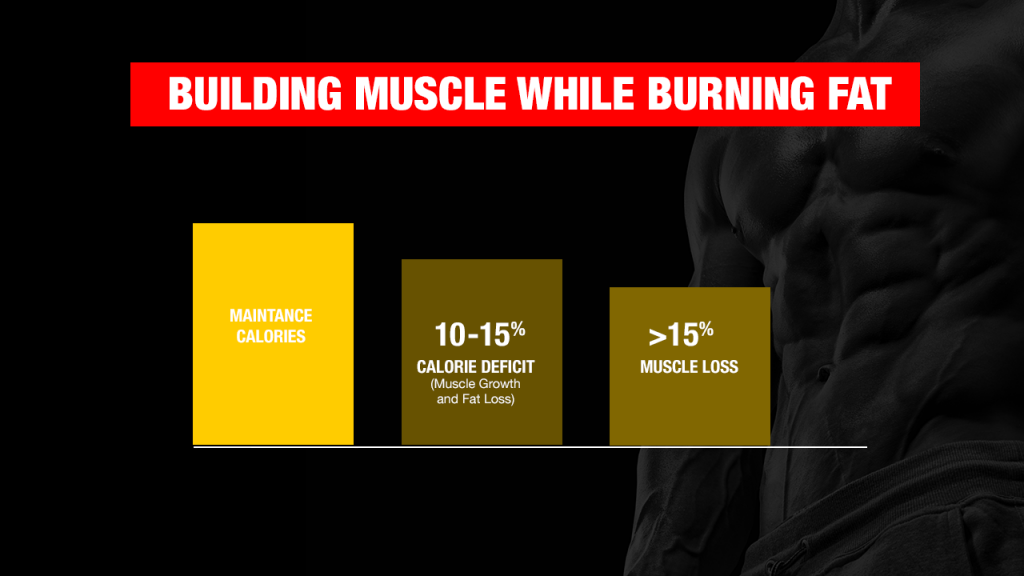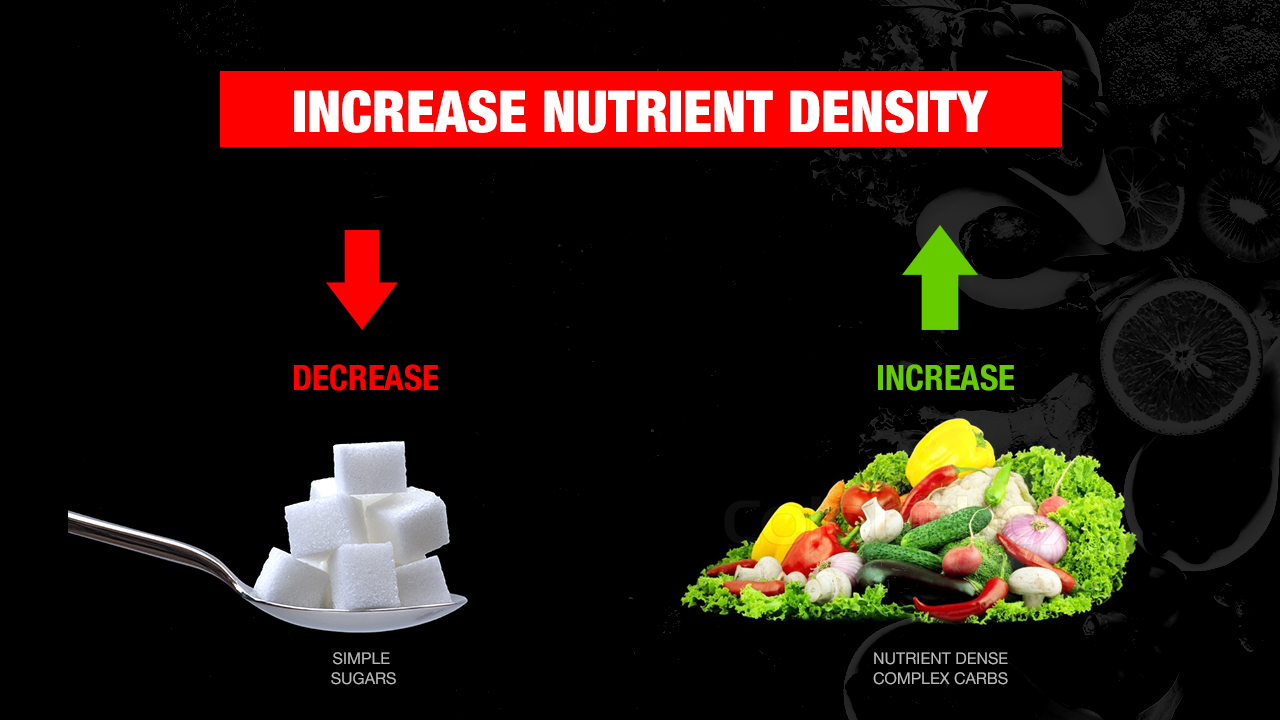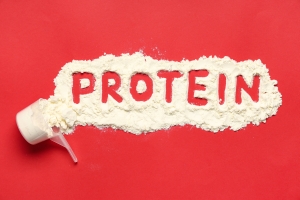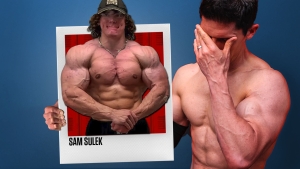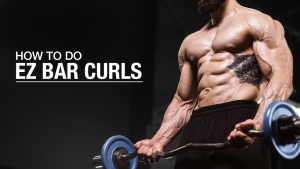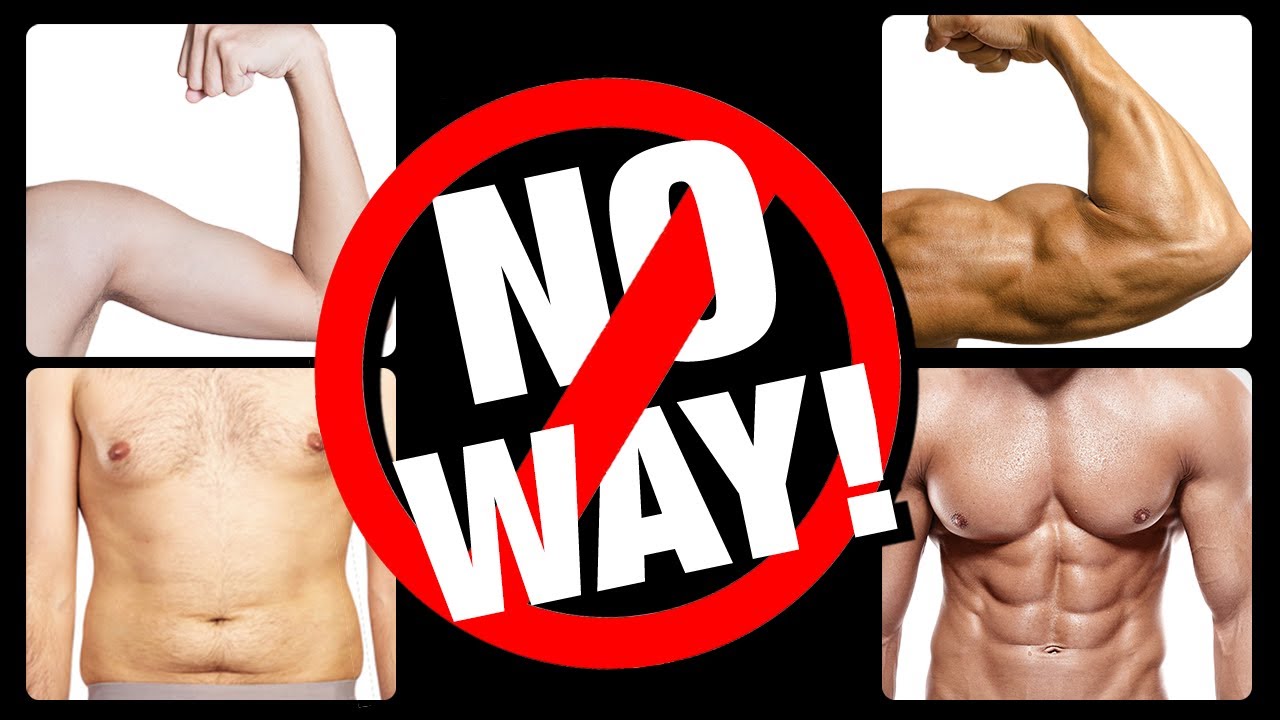
HOW TO BUILD MUSCLE AND LOSE FAT
Guys, here’s a question for you: Is it possible to build quality lean muscle mass AND burn body fat at the same time?
Or is bulking and cutting the only option when you want to achieve weight loss and muscle growth?
Well, that’s exactly what I’m going to break down into today’s article.
Hint: It IS possible to be successful with body recomposition without bulking and cutting.
I’m going to explain how if you train and eat the correct way, you can burn fat and build muscle simultaneously and stay ripped year-round.
I’ll also discuss the fundamentals on how to lose weight and gain muscle.
Let’s get to it!
THE PROBLEM WITH BULKING AND CUTTING
How long have you heard that the ONLY way to get big and lean body mass is to bulk then cut?
Here’s the thing, guys, for every successful person that makes it through a bulk and cut, there are millions of people that don’t succeed.
They get bulky and they stay bulky. Or, for the hard gainers, the plane never gets off the ground. They just stay lanky.
This happens because they never learned the key requirements of good nutrition and proper training beforehand. More importantly, they never learned how to be dedicated to good nutrition, and how to remain consistent with the right training.
The problem with the bulk-and-cut cycle is that while it may happen faster if you do it successfully, it is not going to be a sustainable approach for many.
So, what should you focus on? Sustainable, long-term lifestyle changes that ensure you can get big AND lean simultaneously.
And despite what people try to tell you, here’s the truth: It IS possible to do both.
Let’s talk about some body recomposition methods on how to lose excess body fat and gain muscle.
NUTRITION FOR BURNING FAT AND BUILDING MUSCLE
Let’s start things off by talking about the nutrition side of fat burn and muscle gain.
We’ll talk about this first because, let’s face it, no one likes this part. But you have to get your nutrition game on point if you want to lose weight and gain muscle, guys.
So, many people hold the belief that building muscle and burning fat are too opposed to each other to actually be able to be achieved together.
If you want to build muscle, they’ll say you need to be in a calorie intake surplus. If you want to burn fat, they’ll say that you need to be in an energy deficit or a decrease in calorie intake.
That’s actually not true.
Yes, you do need to be in a calorie deficit in order to burn fat. But to build muscle, you don’t have to be in a consumed caloric surplus.
There’s a big difference.
Your body is smart. It has ways to produce energy and create an energy surplus without the consumption of food and calories. That means, you can tap into your own stores of body fat to create the energy needed to support new muscle mass and muscle growth.
That’s a good thing because if you’re interested in this topic, you likely have body fat to burn. It becomes way more challenging as you lose more body fat.
If you have very low levels of body fat, you don’t have the luxury of being able to tap into those stores to do that. It’ll get harder to see reductions in body fat.
And what happens then is your body starts to tap into muscle. Your lean muscle tissue is also willing to provide the energy needed, but it’s not going to be very helpful to break down muscle if your goal is trying to build new muscle.
So, we don’t want to do that, and this is where proper food and caloric intake comes into play.
But you want to make sure you don’t make some big mistakes.
Here are some things you can do to improve your nutrition and ensure you are able to lose weight and build muscle at the same time.
KEEP YOUR DEFICIT IN CHECK
The first thing I would caution you is not to get too aggressive with a calorie deficit. That means don’t jump into one of these crazy fad diets that has you dropping down to half of your maintenance calories.
I’ll give you an extreme example to make the math easier.
Let’s say your maintenance calories are between 3,200 to 4,800. You would NOT want to suddenly cut down to 1,600-2,400 calories. If you take in too few calories in the pursuit of trying to make this happen fast, you slow the whole process down to the point where it actually doesn’t even work anymore.
You want to make sure you don’t try to exceed anything higher than a 10% to 15% deficit from your current maintenance level of calories. And 15% is pushing it, especially if you don’t have much fat to lose.
As an example, if your maintenance level of calories is 3,000 in a day, you wouldn’t want to cut any more than 300 to 450 extra calories.
When you exceed a 15% deficit, you start to walk that line where your body looks at muscle protein as a source for providing the energy for what you’re trying to accomplish.
Again, you don’t want this to happen, so stay away from super low-calorie diets. Cutting into muscle to try to build muscle is not where we want to be.
HOW MUCH PROTEIN DO YOU NEED TO BUILD MUSCLE?
The second thing you’re going to want to do is make sure that you have an appropriate protein intake.
To be blunt: You need to be on a high-protein diet, because many trusted source studies will show that eating enough protein is going to be required to make this process work.
A lot of people think that a good rule of thumb is to consume one gram of protein per pound of body weight (2.2 grams per kilogram of body weight), but this actually isn’t true. The good thing is you don’t have to have that much.
Studies will show that .8 grams per pound of body weight (1.8 grams per kilogram of body weight) will do the job.
Where does the idea of one gram per pound of body weight come from? Honestly, I think it’s just because people round up.
However, we know that the difference between .8 and one is 20%, and 20% is a pretty big difference.
You don’t need to focus on animal-based options of protein. If you’re a vegan or vegetarian, there are plenty of high-protein options. You also have additional protein options in the form of non whey protein supplements such as pea protein.
But if you don’t have dietary restrictions, there are plenty of high-quality protein sources for you to incorporate. There’s plenty of protein in food sources like eggs, egg whites, chicken, grass-fed steak, and tuna.
Dairy products are complete protein sources, but they might not be your best friend for digestion.
Consume whatever types of protein work best for you.
CHOOSE QUALITY OVER QUANTITY
The final thing I want you to focus on is you need to increase the QUALITY of the nutrition that you put in your body.
As you increase the quality of the foods in your healthy diet, the nutrient density goes up. In other words, you’ll be eating more productive food and this only helps to fuel your body.
These foods can provide your body with vitamins and minerals to accelerate the process of what you’re looking to accomplish. Which, in this case, is burn fat and build muscle.
This means you need to ditch those refined carbohydrates, which is just pure sugar.
That doesn’t necessarily mean your carbohydrate intake has to go down – it might – but you definitely need to ditch those junk carbs. Those carbs throw your blood sugar levels out of whack and promote your risk of belly fat.
Instead, focus on nutritious carbohydrates like high-fiber foods.
The second thing is by increasing the nutrient quality, these food choices usually become less calorically dense. So that allows you to take in more food and still be in that 10%, 12%, or 15% calorie deficit range.
There is one important note related to nutrition that I wanted to mention. If you have any pre-existing health conditions including but not limited to diabetes, obesity or heart issues, it would be best to speak to some nutrition experts who can create a custom weight loss diet plan for you.
That means you’ll get a custom macronutrient breakdown, body recomposition regimen, and easy-to-follow nutrition guide, all based on your body composition goal.
If you need help with blood sugar control because of diabetes, a physician and a nutritionist can also help you come up with a personalized body recomposition plan.
TRAINING TO BURN FAT AND GAIN MUSCLE
Nutrition is only one half of the equation. Training is the other half.
Let’s take a look at some things you can do in terms of training to burn fat and build muscle.
RESISTANCE TRAINING for burning fat and building muscle
Should you focus on conditioning and cardiovascular exercise, or resistance training?
Focus on resistance / strength training. As a matter of fact, this type of exercise is one of the non-negotiables here. You have to do resistance training in some form.
And I say resistance exercises, but it doesn’t have to be in the form of weights, although I would highly encourage you to use weighted exercises. However, bodyweight training and resistance band training also work.
There are ways to increase the intensity of body-weight exercises to make them ideal for building muscle.
Some form of resistance training is necessary every week. This is because resistance training sparks your muscles to grow back bigger and stronger.
Some great resistance exercises include the Barbell Back Squat, Deadlifts, and Bench Press. All of these types of exercises trigger an awesome calorie burn.
If you don’t provide the stimulus, this whole thing goes out the window. You miss out on muscle growth and burning a chunk of calories.
IS CARDIO GOOD FOR BURNING FAT AND BUILDING MUSCLE?
I will give you this other revelation that might shock some of you. Conditioning and cardio workouts are completely unnecessary to achieve your fitness goals of building muscle and burning fat.
In other words, you don’t necessarily need cardio for the breakdown of fat.
With that said, cardio is essential for your overall health and activity level. There are many health benefits in cardiovascular exercises including a lower risk for metabolic disease.
If you want to be a normal, functioning person with a healthy heart then you should be doing conditioning and cardio workouts.
I’m just saying that you can achieve your goal through nutritional changes alone and creating that deficit. But it’s going to be a lot more effective and it’s going to be a lot easier for you to do this if you incorporate some of the conditioning and cardio workouts as well.
One of my favorite ways to take care of cardio is with high-intensity interval training or bursts of activity that are fast, intense, and effective. Something like a 15-20 minute HIIT workout a couple of days per week will be good for the cardio portion of your workout.
But you can also alternate your cardiovascular activity with steady-state cardio, if you like to mix it up.
RECOVERY IS ESSENTIAL
You know I can’t talk about training without discussing it’s complementary opposite: rest and recovery.
No matter what your goal is, if you’re training and training hard, you need to rest up. That means no less than 7 hours of sleep.
What happens if you overtrain, undereat, and don’t sleep? Well, a lot actually, and none of it’s good.
You’ll experience muscle loss – that means you’re saying goodbye to BOTH the fat-free mass you spent time trying to build and the muscle definition with it.
The muscle growth disappears, and your body’s fat percentage goes up. Those who over train and under recover tend to have a higher ratio of fat to lean muscle.
ADDRESSING THE ’BIG GUY LIE’
We all know someone who has told the “big guy lie.” This is the guy who starts off wanting to build muscle and burn fat, and never gets out of his bulking phase.
In that perpetual bulk, he then all of a sudden says, “You know what? Being ripped doesn’t really matter. Having abs is overrated.”
This guy talks about how just being big and strong and being able to lift things is really the only important thing in the world.
That’s the ‘big guy lie’ because we know that wasn’t his original goal.
He would have liked to have done it, and he could do it, but he needs to be willing to put in a little more time to get there.
IT’S NOT ONLY ABOUT BODY IMAGE
Here’s one important thing to remember: It’s not all about body image. Your body recomposition routine should be focused on your health. The fact that you’ll be muscular and lean is just a bonus of that.
If you focus on the body image part, your body transformation might come at the cost of forgoing safety.
For example, you want to have a natural calorie burn and calorie expenditure – not one that’s spurned on by illegal substances.
My stance has not changed in ten years, and it won’t change ten years from now. You CAN build muscle and burn fat simultaneously!
It’s going to work if you’re willing to put the work in, but it’s a slowly-and-steady process, not a sprint to the finish line.
Lucky for you, we have plenty of body recomposition programs that focus on this goal of burning fat and building muscle. See which ATHLEAN-X program best meets your needs and goals.

- There are some key elements of caloric intake that need to be done right in order to successfully burn fat and build muscle at the same time.
- There needs to be a caloric deficit from your calorie maintenance levels, but people often fail by attacking this deficit too aggressively. Stick within a 10% to 15% caloric deficit.
- It is also important to make sure you dial in your nutrition by removing the junk from your diet and introducing nutrient dense foods that will provide your body what it needs without the excess calories.
- You need to eat a diet rich in protein, but what does your protein intake need to be in order to build muscle? While it has been traditionally said that you need 1 gram per pound of bodyweight, recent studies have shown that that number is about .8 grams per pound of bodyweight. Aim for that number as you eat plenty of protein-rich foods.
- Building muscle and burning fat doesn’t start and end with nutrition; training is a major factor as well.
- You can burn fat by remaining in a caloric deficit, but to build muscle, resistance training is required.
- Although cardiovascular exercise isn’t necessarily required to reach your fitness goals, it is beneficial for your overall health. For cardio, I’d recommend intense exercise like HIIT.

Jeff Cavaliere M.S.P.T, CSCS
Jeff Cavaliere is a Physical Therapist, Strength Coach and creator of the ATHLEAN-X Training Programs and ATHLEAN-Rx Supplements. He has a Masters in Physical Therapy (MSPT) and has worked as Head Physical Therapist for the New York Mets, as well as training many elite professional athletes in Major League Baseball, NFL, MMA and professional wrestling. His programs produce “next level” achievements in muscle size, strength and performance for professional athletes and anyone looking to build a muscular athletic physique.
















